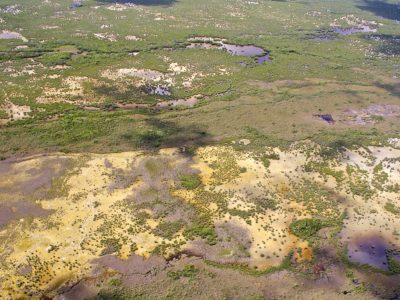
Hidden Origins of Coastal Productivity
Hidden Origins of Coastal Productivity
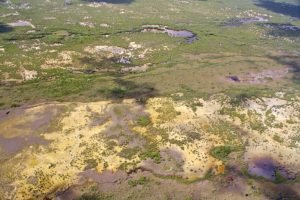
Ecotone interface between mangrove and sawgrass in lower Shark River Slough
Credit: Stephan Davis
Contradicting classical estuary models, FCE LTER research demonstrated that marine nutrient supplies (rather than freshwater nutrient supplies) control coastal productivity gradients via daily tides, episodic storm surges, and hidden groundwater upwelling. Saltwater intrusion amplifies marine pulses by increasing connectivity to the sea and liberating phosphorus from limestone. Sea level projections based on long term data were refined, painting a better picture of how water quality will be affected by shifts in freshwater supply management.
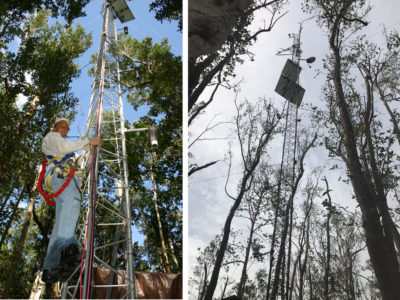
Disturbance Interactions Define Coastal Gradients
Disturbance Interactions Define Coastal Gradients
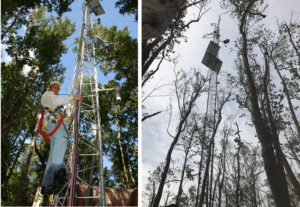
Eddy covariance tower at SRS-6 in lower Shark River before (left) and after (right) Hurricane Irma.
Credit: (left) Jordan Barr (right) Edward Castaneda
Long term data reveal that multiple types of disturbances — including cold snaps, fires, droughts, floods, and tides — play a strong role in shaping coastal ecosystems. Tropical storms can be beneficial by connecting upstream and downstream food webs and dispersing mangrove propagules into disturbance-generated canopy gaps. They also deliver phosphorus rich mineral deposits that promote mangrove transgression, increased soil elevation relative to sea level, and more rapid mangrove wetland recovery.
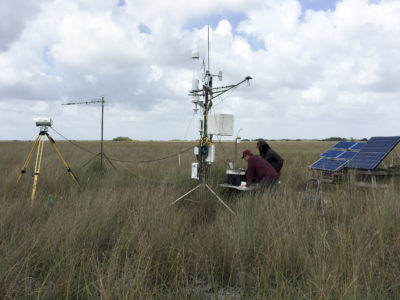
Sea Level Rise May Decouple Carbon Sources / Sinks
Sea Level Rise May Decouple Carbon Sources / Sinks
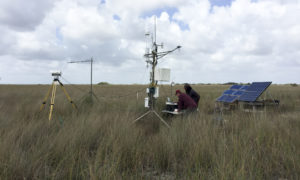
Dr. Greg Starr and Dr. Justin Cummings working on the eddy covariance and meteorological tower near TS/Ph-1b in Taylor Slough.
Credit: Edward Linden
Rising seas can stimulate the inland transgression of mangroves and amplify carbon gains (as observed in historic carbon budgets based on long term flux data, paleoecology, and remote sensing). However, FCE LTER studies, experiments, and models show that carbon losses can exceed increases where saltwater invades freshwater marshes, resulting in abrupt elevation loss (collapse) that further promotes saltwater intrusion.
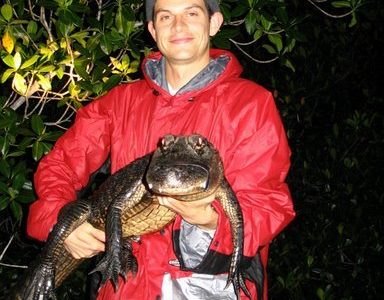
Donor Controlled Food Webs
Donor Controlled Food Webs
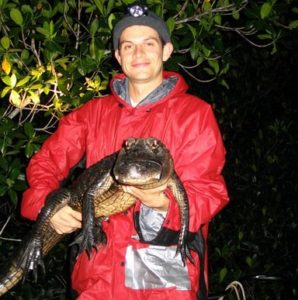
Adam Rosenblatt (Ph.D. student) holding one of his study subjects, an American alligator, in the Shark River estuary.
Credit: Rand Rosenblatt
Coastal food webs are subsidized by episodic and seasonal connections to upstream detrital food supplies. However, top coastal estuary predators show great individual variation in their ability to capitalize on this subsidy — a finding that has been applied in comparative cross-site research.










